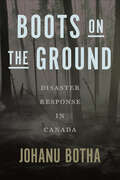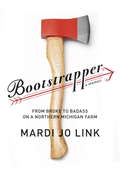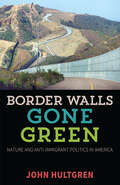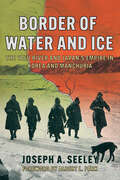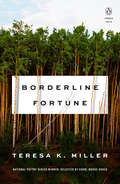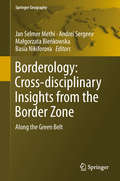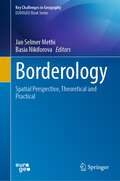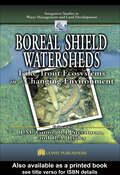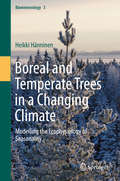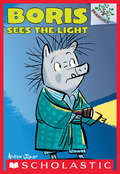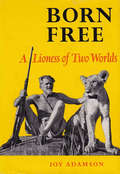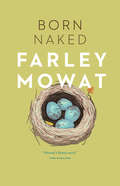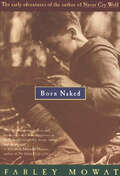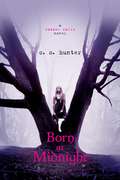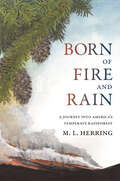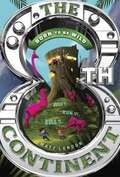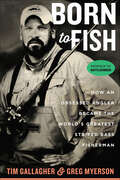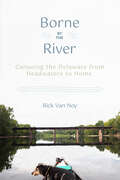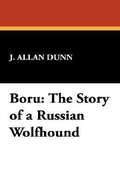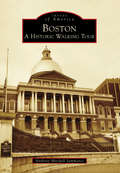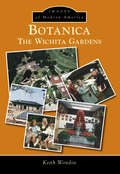- Table View
- List View
Boots on the Ground: Disaster Response in Canada
by Johanu BothaOver the last century, the scale of Canada’s domestic disaster response system has grown significantly due to the country’s increased capacity for emergency management and the rise in natural hazards. However, there has been no systematic assessment of how effectively this multilevel system, which includes all levels of government and the military, has been integrated, and how efficient this system actually is at responding to high-level disasters. Using in-depth archival analysis and interviews with senior military and civilian officials on the inside, Boots on the Ground provides a detailed examination of Canada’s disaster response system. Including policy recommendations focused on the expansion of emergency management networks, the maintenance of Canada’s decentralized emergency management system, and disaster response resources for First Nations communities, Boots on the Ground aims to highlight opportunities to improve Canada’s urgent disaster response. Boots on the Ground offers helpful lessons for students, policy makers, emergency management practitioners, and military officers, ensuring that readers gain concrete insights into the strategic and efficient implementation of disaster response initiatives.
Bootstrapper
by Mardi Jo LinkPoignant, irreverent, and hilarious: a memoir about survival and self-discovery, by an indomitable woman who never loses sight of what matters most. It's the summer of 2005, and Mardi Jo Link's dream of living the simple life has unraveled into debt, heartbreak, and perpetually ragged cuticles. She and her husband of nineteen years have just called it quits, leaving her with serious cash-flow problems and a looming divorce. More broke than ever, Link makes a seemingly impossible resolution: to hang on to her century-old farmhouse in northern Michigan and continue to raise her three boys on well water and wood chopping and dirt. Armed with an unfailing sense of humor and three resolute accomplices, Link confronts blizzards and foxes, learns about Zen divorce and the best way to butcher a hog, dominates a zucchini-growing contest and wins a year's supply of local bread, masters the art of bargain cooking, wrangles rampaging poultry, and withstands any blow to her pride in order to preserve the life she wants. With an infectious optimism that would put Rebecca of Sunnybrook Farm to shame and a deep appreciation of the natural world, Link tells the story of how, over the course of one long year, she holds on to her sons, saves the farm from foreclosure, and finds her way back to a life of richness and meaning on the land she loves. This ebook edition includes a Reading Group Guide.
Border Crossings
by Sneed B. CollardFollow two endangered ocelots as they attempt to cross the border in this powerful picture book about the environmental impact of the Wall.Explore the beauty and biodiversity of our spectacular border area and see how the Wall impacts plants and animals. As two endangered ocelots attempt to cross the border, they face obstacles that drive home the catastrophic effects of the Wall--and the many benefits of keeping the border barrier-free. Powerful storytelling introduces young readers to the wildlife that thrives along the border and urges budding nature buffs to value and protect our environment.
Border Walls Gone Green: Nature and Anti-immigrant Politics in America
by John HultgrenHow is it that self-identified environmental progressives in America can oppose liberalizing immigration policies? Environmentalism is generally assumed to be a commitment of the political left and restrictionism a commitment of the right. As John Hultgren shows, the reality is significantly more complicated. American environmentalists have supported immigration restrictions since the movement first began in the late 1800s, and anti-immigration arguments continue to attract vocal adherents among contemporary mainstream and radical &“greens.&”Border Walls Gone Green seeks to explain these seemingly paradoxical commitments by examining what is actually going on in American debates over the environmental impacts of immigration. It makes the case that nature is increasingly being deployed as a form of &“walling&”—which enables restrictionists to subtly fortify territorial boundaries and identities without having to revert to cultural and racial logics that are unpalatable to the political left. From an environmental point of view, the location of borders makes little sense; the Mexican landscape near most border crossings looks exactly like the landscape on the American side. And the belief that immigrants are somehow using up the nation&’s natural resources and thereby accelerating the degradation of the environment simply does not hold up to scrutiny. So, Hultgren finds, the well-intentioned efforts of environmentalists to &“sustain&” America are also sustaining the idea of the nation-state and in fact serving to reinforce exclusionary forms of political community.How, then, should socially conscious environmentalists proceed? Hultgren demonstrates that close attention to the realities of transnational migration can lead to a different brand of socio-ecological activism—one that could be our only chance to effectively confront the powerful forces producing ecological devastation and social injustice.
Border of Water and Ice: The Yalu River and Japan's Empire in Korea and Manchuria (The Environments of East Asia)
by Joseph A. SeeleyBorder of Water and Ice explores the significance of the Yalu River as a strategic border between Korea and Manchuria (Northeast China) during a period of Japanese imperial expansion into the region. The Yalu's seasonal patterns of freezing, thawing, and flooding shaped colonial efforts to control who and what could cross the border. Joseph A. Seeley shows how the unpredictable movements of water, ice, timber-cutters, anti-Japanese guerrillas, smugglers, and other borderland actors also spilled outside the bounds set by Japanese colonizers, even as imperial border-making reinforced Japan's wider political and economic power. Drawing on archival sources in Japanese, Korean, Chinese, and English, Seeley tells the story of the river and the imperial border haphazardly imposed on its surface from 1905 to 1945 to show how rivers and other nonhuman actors play an active role in border creation and maintenance. Emphasizing the tenuous, environmentally contingent nature of imperial border governance, Border of Water and Ice argues for the importance of understanding history across the different seasons.
Borderline Fortune (Penguin Poets)
by Teresa K. MillerA collection that explores inherited trauma on an individual and communal level, from a National Poetry Series–winning poet who &“refus[es] the mind&’s limits&” (Carol Muske-Dukes)Borderline Fortune is a meditation on intangible family inheritance—of unresolved intergenerational conflicts and traumas in particular—set against the backdrop of our planetary inheritance as humans. As species go extinct and glaciers melt, Teresa K. Miller asks what we owe one another and what it means to echo one&’s ancestors&’ grief and fear. Drawing on her family history, from her great-grandfather&’s experience as a schoolteacher on an island in the Bering Strait to her father&’s untimely death, as well as her pursuit of regenerative horticulture, Miller seeks through these beautifully crafted poems to awaken from the intergenerational trance and bear witness to our current moment with clarity and attention.
Borderology: Along the Green Belt (Springer Geography)
by Jan Selmer Methi Andrei Sergeev Małgorzata Bieńkowska Basia NikiforovaThis book provides a unique and multifaceted view on and understanding of borders and their manifestations: physical and mental, cultural and geographical, and as a question of life and death. It highlights the Green Belt along the Iron Curtain, which offered a haven for rare species for many decades and, after the Cold War, became a veritable treasure trove for a European network of researchers. A geographical border is something that can be seen, but other borders sometimes have to be crossed to be discovered. The border zone is an arena for development that is not found in any other places. This book focuses on borderology, which became the name of a cross-border study and research program that explores the border zone from multiple perspectives. This cross-disciplinary book will appeal to interested researchers and students from many fields, from philosophy and diplomacy to ecology and geography.
Borderology: Spatial Perspective, Theoretical and Practical (Key Challenges in Geography)
by Jan Selmer Methi Basia NikiforovaThis book develops and establishes knowledge about borderology in the border zone between different countries, cultures, and climatic environment. The content of border and border zone has, during our research, changed from being a physical border between states to different borders and border zones which also include social and mental borders. The COVID-19 pandemic has challenged the concept even more. The expressions “lockdown” and "social distance" indicate such borders that we, a short time ago, had largely not considered in our everyday life. Not only states closed their borders, regions inside a country, and even borders within families were established. “Illegally” passing these borders could crate strong reactions both from the nature by a disease or by the authorities with fees. The pandemic has not only challenged our understanding of borders and border zones, but it has also challenged our understanding of human rights and especially our understanding of what freedom is.
Boreal Forests in the Face of Climate Change: Sustainable Management (Advances in Global Change Research #74)
by Yves Bergeron Miguel Montoro Girona Hubert Morin Sylvie GauthierThis open access book explores a new conceptual framework for the sustainable management of the boreal forest in the face of climate change. The boreal forest is the second-largest terrestrial biome on Earth and covers a 14 million km2 belt, representing about 25% of the Earth’s forest area. Two-thirds of this forest biome is managed and supplies 37% of global wood production. These forests also provide a range of natural resources and ecosystem services essential to humanity. However, climate change is altering species distributions, natural disturbance regimes, and forest ecosystem structure and functioning. Although sustainable management is the main goal across the boreal biome, a novel framework is required to adapt forest strategies and practices to climate change. This collaborative effort draws upon 148 authors in summarizing the sustainable management of these forests and detailing the most recent experimental and observational results collected from across the boreal biome. It presents the state of sustainable management in boreal forests and highlights the critical importance of this biome in a context of global change because of these forests' key role in a range of natural processes, including carbon sequestration, nutrient cycling, and the maintaining of biodiversity. This book is an essential read for academics, students, and practitioners involved in boreal forest management. It outlines the challenges facing sustainable boreal forest management within the context of climate change and serves as a basis for establishing new research avenues, identifying future research trends, and developing climate-adapted forest management plans.
Boreal Shield Watersheds: Lake Trout Ecosystems in a Changing Environment
by J. M. Gunn R. J. Steedman R. A. RyderBoreal Shield Watersheds: Lake Trout Ecosystems in a Changing Environment brings together the work of a renowned international group of scientists who specialize in aquatic science and environmental management. They explore the functioning of Boreal Shield ecosystems, focusing on the lake trout, the classic coldwater species of northern glaciated l
Boreal and Temperate Trees in a Changing Climate: Modelling the Ecophysiology of Seasonality (Biometeorology)
by Heikki HänninenThis book provides an overview of how boreal andtemperate tree species have adapted their annual development cycle to theseasonally varying climatic conditions. Therefore, the frost hardy dormant phase, and thesusceptible growth phase, are synchronized with the seasonality of the climate. The volume discusses the annual cycle, including variousattributes such as timing of bud burst and other phenological events, seasonalityof photosynthetic capacity or the frost hardiness of the trees. During the last few decades dynamic ecophysiologicalmodels have been used increasingly in studies of the annual cycle, particularlywhen projecting the ecological effects of climate change. The main emphasis of this volume is oncombining modelling with experimental studies, and on the importance of thebiological realism of the models.
Boris Sees the Light: A Branches Book (Boris #4)
by Andrew JoynerFor even a brave warthog like Boris, the thrills of a backyard campout can turn into chills when nighttime falls . . . Boris is having a sleepover! He’s camping in the backyard with Frederick and Alice. And they are not one bit scared of the dark. No way! But what is that strange light moving around outside the tent? And what is making all of those strange, scary noises? It’s up to Boris to find out . . . This series is part of Scholastic’s early chapter book line called Branches, which is aimed at newly independent readers. With easy-to-read text, high-interest content, fast-paced plots, and illustrations on every page, these books will boost reading confidence and stamina. Branches books help readers grow!“Attractive, slyly humorous illustrations, simple text and a related craft included at the end all serve to make this a welcome addition to collections for beginning readers.” —Kirkus Reviews
Born Free
by Joy AdamsonThere have been many accounts of the return to the wild of tame animals, but since its original publication in 1960, when The New York Times hailed it as a “fascinating and remarkable book,” Born Free has stood alone in its power to move us. Joy Adamson's story of a lion cub in transition between the captivity in which she is raised and the fearsome wild to which she is returned captures the abilities of both humans and animals to cross the seemingly unbridgeable gap between their radically different worlds. Especially now, at a time when the sanctity of the wild and its inhabitants is increasingly threatened by human development and natural disaster, Adamson's remarkable tale is an idyll, and a model, to return to again and again.
Born Naked
by Farley MowatFarley Mowat's outrageous memoir begins with his unlikely conception in a canoe and continues to his boyhood fascination with creatures of the natural world and on to his youthful rambles and adventures. To his immense pleasure and his parents' dismay, he adopted various beasts (whom he affectionately calls "The Others") as roomates. In this boyhood memoir, he recounts the exploits of this second family, who have been the subjects of many of his beloved books for young readers. This is the tale of a mischievous, immensely gifted young naturalist, recounted with the wisdom, humour and grown-up perspective of a very talented writer.
Born Naked
by Farley MowatFarley Mowat's outrageous memoir begins with his unlikely conception in a canoe and continues to his boyhood fascination with creatures of the natural world and on to his youthful rambles and adventures. To his immense pleasure and his parents' dismay, he adopted various beasts (whom he affectionately calls "The Others") as roomates. In this boyhood memoir, he recounts the exploits of this second family, who have been the subjects of many of his beloved books for young readers. This is the tale of a mischievous, immensely gifted young naturalist, recounted with the wisdom, humour and grown-up perspective of a very talented writer.
Born Naked: The Early Adventures of the Author of Never Cry Wolf
by Farley MowatFarley Mowat's youth was charmed and hilarious, and unbelievably free in its access to unspoiled nature through bird-banding expeditions and overnight outings in the dead of winter. The author writes of sleeping in haystacks for survival, and other adventures, with equal shares of Booth Tarkington and Jack London. He also brings back Mutt, the famous hero-dog of his classic THE DOG WHO WOULDN'T BE, and his pet owl Wol, hero of OWLS IN THE FAMILY. The tale of an outrageous and clever boy, BORN NAKED takes its place as the foundation of the Farley Mowat canon.
Born at Midnight
by C. C. HunterSixteen-year-old Kylie Galen thinks her misbehaviour in the wake of her grandmother's death and her parents' separation are the reasons she has been sent to Shadow Falls Camp, but learns it is a training ground for vampires, werewolves, and other "freaky freaks," of which she may be one.
Born in the Year of Courage
by Emily CroffordIt is the mid-1800s and Manjiro, a young fisherman, is shipwrecked far off the coast of his native Japan. <p><p> At this time in history, Japan is an isolated country that allows its citizens no contact with the rest of the world. Foreigners are called "barbarians"—and none are more despised than Americans. But when Manjiro and his fishing companions are rescued by an American ship, Manjiro makes some startling discoveries about the world of the barbarians—and about his own country. <p><p> His dramatic rescue leads to a series of amazing escapades, and in the end Manjiro travels farther than he ever dreamed he would. Born in the Year of Courage is based on the true story of Manjiro's remarkable life. It is both an exciting adventure tale and a fascinating look at a bygone world.
Born of Fire and Rain: Journey into a Pacific Coastal Forest
by M. L. HerringGo beyond the scenery of the Pacific temperate rainforest to witness how complex ecosystems survive in a world of upheavals If you live on a rapidly changing planet, you&’d be wise to learn how it works. The giant old forests on a skinny stretch of land on the far west coast of North America have a lot to say about living in a twitchy world. In this engaging book science writer M. L. Herring takes readers into the Pacific temperate rainforest at the tumultuous edge of a shifting continent in a precarious moment of time. Readers peek behind the magnificent scenery into a forest of ancient trees, exploding mountains, disappearing owls, tsunamis, megafires, and ten million people to learn what it means to be a forest in a world of upheavals. Through Herring&’s words and pictures, readers drift into the canopy through masses of ferns and lichens, burrow into soil through hair-thin threads of fungi, and plunge headlong through a watershed flushed with rain and snowmelt. Readers experience the temperate rainforest through science and art as it faces a shifting climate and the shifting priorities of a constantly changing society. The book journeys beyond the grid of latitude and longitude and into places only one&’s imagination can fit, to discover what it means to be human in an ecological world.
Born to Be Wild
by Matt LondonHOW WILD WOULD IT TO BE TO BUILD ON AN EIGHTH CONTINENT?Rick and Evie Lane believe that the eighth continent will be theirs to rule forever. There's just one problem: global rule-maker Winterpole won't let anyone move there!Now, the Lane family must rush to create hospitals, homes, schools, and (shocker!) government buildings to prove that their continent is fit for human habitation. But the Lanes aren't the only ones engaged in this race for space. Condo Corp secret CEO Vesuvia Piffle recognizes this as her opportunity to finally snag the eighth continent for herself. If she can knock down enough of the Lanes' buildings and construct perfect, pink, plastic ones in her image, the eighth continent might just finally be hers to make all sugary sweet and spider-free.The Lanes will need to use every resource at their disposal to ensure that their precious eighth continent remains as natural--and wild--as they are. Just as it was born to be.BUILD IT - RUN IT - RULE IT at 8thContinentBooks.com
Born to Fish: How an Obsessed Angler Became the World's Greatest Striped Bass Fisherman
by Tim Gallagher Greg MyersonFrom RattleSinker inventor Grey Myerson, "an extraordinary story of one man's obsession, a tale of passion, brutality, tragedy, and redemption...a book about a love of fishing that tackles the deepest themes of life" (Helen Macdonald, author of H is for Hawk).Born to Fish tells the tale of a man who led a harrowing, sometimes dissolute life until he turned himself around, thanks to his rod and reel. Overcoming learning disabilities, substance abuse, and the violence associated with a father in the mob, Greg Myerson, a lifelong sport-fisherman, caught an 82-pound striped bass in 2011, shattering a world record that had stood for 29 years. Without any training in biological research, he began studying the striped bass like a scientist—examining how it hunts, the food it eats, how its behavior is affected by moon phases and the cycles of the tides—which led to the creation of the RattleSinker, the lure that helped him catch the record-setting bass. During an appearance on the TV show Shark Tank, Mark Cuban bought a 33 percent share of Greg's company, World Record Striper Company. Yet at the very instant he achieved his crowning glory as a striped bass fisherman, he had a staggering epiphany and instantly regretted killing the fish. Greg is now at the forefront of the effort to save the big striped bass, the most prolific breeders, and actively promotes no-kill catch-and-release tournaments.
Borne by the River: Canoeing the Delaware from Headwaters to Home
by Rick Van NoyAfter a near-fatal stroke and a separation, amidst a global pandemic, Rick Van Noy decided to go for a paddle. In Borne by the River, he charts the story of discovery, and healing that came from this solo canoe journey. Paddling two hundred miles on the Delaware River to his boyhood home just upriver from Trenton, New Jersey, Van Noy contemplates his fate and life, as well as the simple joy of sitting in a small boat floating down a large river with his dog, Sully.Deftly combining memoir, natural and local history, and engaging reportage of his encounters with other paddlers and river enthusiasts, including members of the Lenape Nation of Pennsylvania, Van Noy reveals deep and shifting layers of environmental, historical, cultural, and personal significance of the Delaware. Borne by the River reckons with the way that rivers braid into one's own life—thrilling rapids, eddying pauses, and life-changing rifts and falls. Van Noy rediscovers and shares how river journeys can scatter anxieties, wash away regrets, and recreate the spirit in its free-flowing currents.
Boru: The Story of an Irish Wolfhound (Famous Dog Stories)
by J. Allan DunnEscaping a circus, where he had been part of a dog act, the giant Irish Wolfhound ran wild, took as a mate a great white wolf, and became a freebooter, ranging the hills and plains of northwestern Montana. Based on a true story.
Boston: A Historic Walking Tour
by Anthony Mitchell SammarcoOliver Wendell Holmes coined the Massachusetts State House as the "Hub of the Universe." In Boston: A Historic Walking Tour, readers are guided on a series of downtown walking tours that radiate out from this Boston landmark. Featuring different excursions that explore Boston's prominent neighborhoods and districts, visitors and natives alike will see how this city has become one of the country's oldest cultural destinations. Boston's growth and development in the 19th and 20th centuries has contributed to it becoming the unofficial "Capital of New England"; its economic and cultural impact on the entire New England region is far reaching. Although Boston is known for its notoriously crooked streets and narrow alleys, it is a mecca for walkers looking to take in historic sites and surround themselves with history. Walk along Tremont, Washington, Beacon, and Summer Streets to explore downtown Boston. Saunter down Beacon Street on Beacon Hill and Boylston Street in the Back Bay to take in the city's most beloved sites.
Botanica: The Wichita Gardens
by Keith WondraGrowing from 4 gardens in 1987 to 29 in 2015, Botanica, The Wichita Gardens has become a regional attraction. The dream of a botanical garden in Wichita started in the early 1970s with John Firsching, superintendent of landscape and forestry with the Board of Park Commissioners, and in 1987 the gardens opened on the site of Wichita's Sim Park. Images of Modern America: Botanica, The Wichita Gardens tells the story of the people, events, and stories that have shaped Botanica into Wichita's garden. Included are images of Botanica throughout the gardens' 28-year history and the earlier history of Sim Park, many of which have never been published before.
